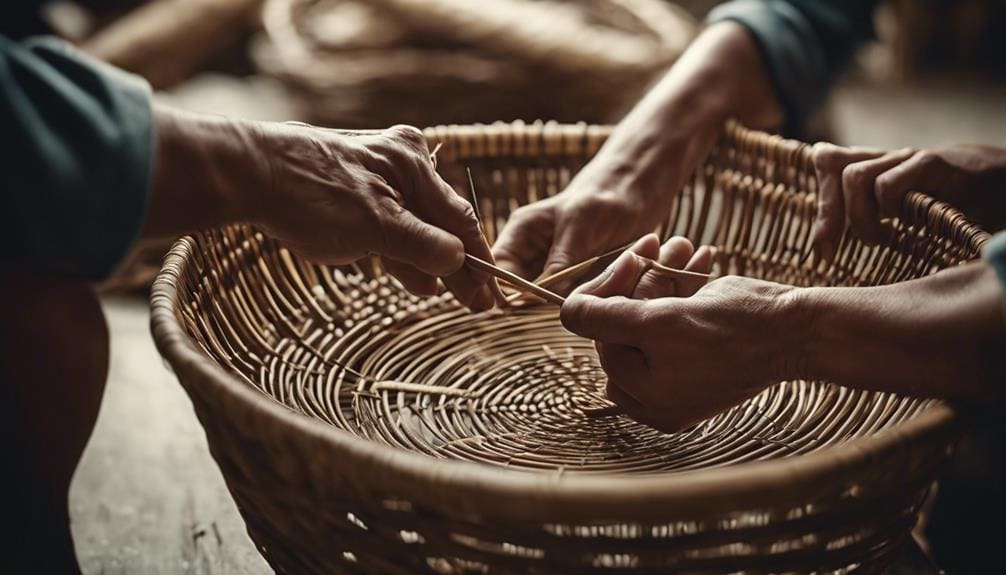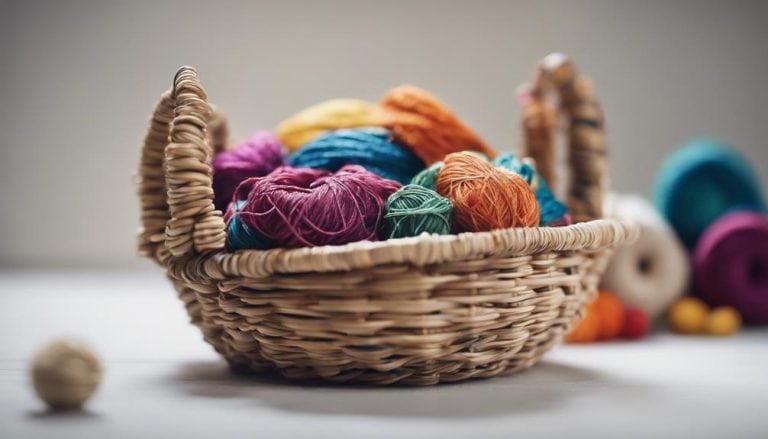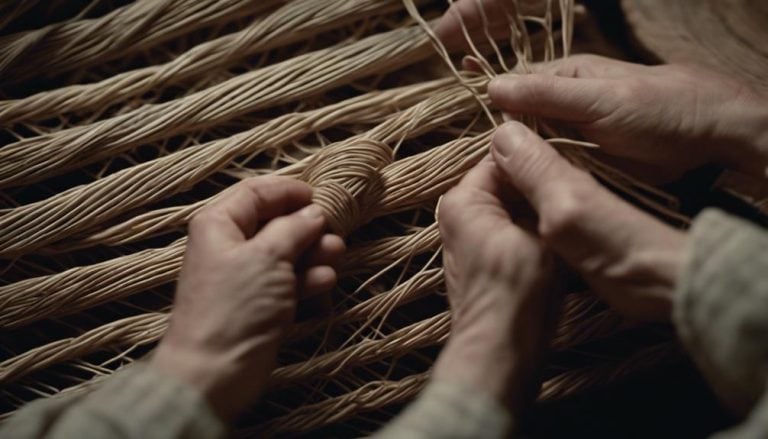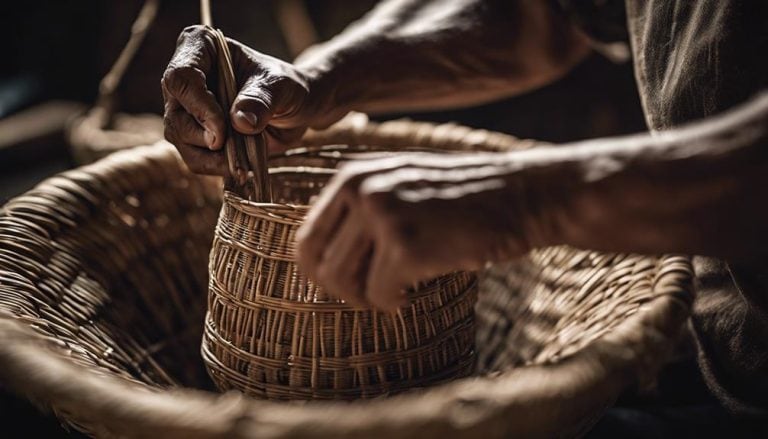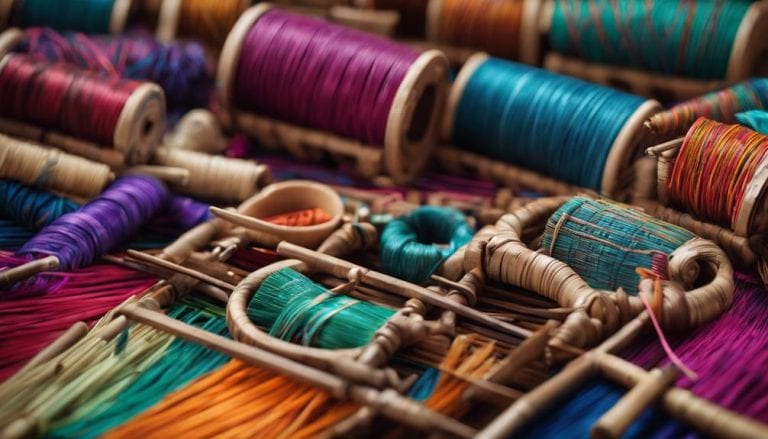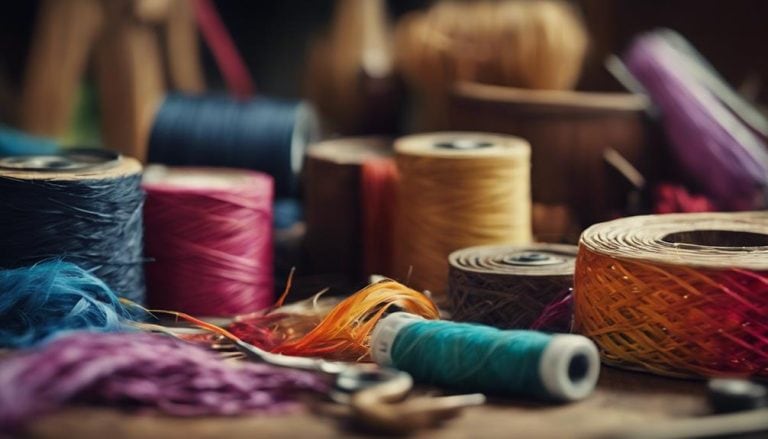Rattan Cane for Basket Weaving
When it comes to basket weaving, rattan cane is a quietly appreciated essential. The natural material’s pliability and strength are unmatched, providing a foundation for intricate designs and sturdy structures.
Rattan cane is commonly used for basket weaving. It is a durable and flexible material suitable for creating intricate and sturdy baskets, making it a popular choice among weavers.
But what sets rattan cane apart goes beyond its practicality; there’s a certain allure to its versatility that intrigues novice crafters and seasoned artisans alike. Are you intrigued to discover more about the intricate process and the captivating results this unassuming material can yield?
Key Takeaways
- Rattan cane embodies cultural significance and design aesthetics in basket weaving.
- Its unique characteristics of strength and flexibility ensure durable and high-quality woven baskets.
- Sustainable harvesting practices support artisans, communities, and environmental conservation.
- Weaving with rattan cane allows for endless creativity, reflecting eco-friendly crafting and the weaver’s artistic vision.
History of Rattan Cane
Throughout centuries of craftsmanship and cultural heritage, rattan cane has played a significant role in basket weaving. Its cultural significance stems from its origins in Asia and Africa, where artisans mastered weaving intricate patterns using this versatile material. The artistic evolution of rattan cane can be traced through generations of weavers who have honed their skills to create stunning pieces that reflect their cultural identities.
The weaving techniques developed over time have transformed simple strands of rattan cane into complex and visually captivating designs. Each pattern tells a story of tradition and innovation, showcasing the creativity and ingenuity of the artisans who work with this material.
As rattan cane became more widely used for furniture and basketry, its natural color and texture became synonymous with elegance and sophistication in interior design. The evolution of rattan cane weaving inspires modern interpretations that blend tradition with contemporary aesthetics.
Unique Characteristics of Rattan Cane
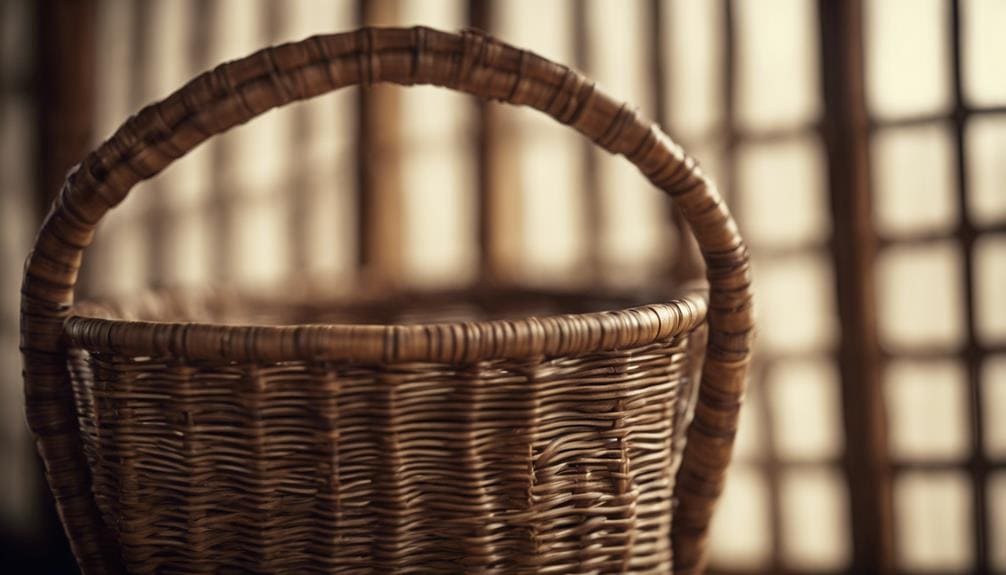
Rattan cane is a versatile and resilient material cherished by basket weavers for its exceptional strength and flexibility, making it an ideal choice for creating intricate and durable woven pieces. The durability of rattan cane ensures that the baskets crafted with it can withstand everyday use without losing their shape or integrity. Its flexibility allows weavers to create intricate patterns and designs, easily bending and shaping the cane to their desired form.
This material’s ability to hold dye and stains well adds another dimension to the creations, allowing for a personalized touch in basket designs. The smooth and uniform texture of rattan cane, derived from the core of the rattan vine, ensures a high-quality finish in woven projects. Its availability in various shapes and sizes further enhances its appeal, offering basket weavers a wide range of options to explore in their craft.
Sustainable Harvesting of Rattan Cane

Sustainably harvested from climbing palms in tropical regions like Southeast Asia and Africa, rattan cane serves as a vital resource for basket weavers and furniture makers alike. Here are some key aspects to consider when discussing the sustainable harvesting of rattan cane:
- Environmental Impact: Cutting rattan at the base allows the palms to regenerate, ensuring a continuous and renewable source of rattan. This sustainable method helps protect the environment by preserving the natural habitat of these climbing palms.
- Community Benefits: Sustainable harvesting practices benefit the environment and support local communities that depend on rattan resources for livelihood. By promoting responsible rattan harvesting, these communities can continue to thrive economically and culturally.
- Economic Sustainability: Rattan cane’s rapid growth rate and regenerative properties make it a sustainable choice for basket weaving and furniture making. This economic sustainability ensures a steady supply of raw materials for artisans and businesses in the industry.
- Cultural Significance: Rattan has deep cultural roots in many societies, making its sustainable harvesting essential for preserving traditional practices and heritage. By ethically sourcing rattan cane, we can honor and protect these cultural traditions for future generations.
Preparation of Rattan Cane for Weaving

Before weaving with a rattan cane, it is essential to properly prepare the material to ensure flexibility and smoothness in the weaving process. To start, soaking the rattan cane in water for at least 24 hours is crucial to make it pliable for weaving, allowing for easier manipulation during the weaving process. Once soaked, cutting the rattan cane into manageable lengths using sharp tools like a knife or cutter is necessary. This step ensures that the cane can be handled effectively during weaving.
Removing any excess bark or debris from the rattan cane is important to guarantee a smooth weaving experience. It prevents any interruptions during the weaving process that could arise from uneven surfaces. Straightening the rattan cane by gently bending it in the opposite direction of any natural curves helps maintain a uniform appearance in the final woven product.
Storing the prepared rattan cane in a cool, dry place is advised to prevent mold or mildew growth that could compromise the quality of the material before starting the weaving process. These traditional methods are essential in ensuring the rattan cane is ready for weaving, preserving the integrity of artisan crafts, and using natural fibers.
What is the Best Type of Rattan Cane for Basket Weaving?
Basket weaving requires a durable and flexible material, making “top rattan cane for weaving” an ideal choice. With its strength and pliability, rattan cane allows for intricate weaving patterns and long-lasting finished products. When selecting rattan cane for basket weaving, look for the highest quality to ensure a successful and beautiful project.
The Beauty of Rattan Cane in Creations

While exploring the art of basket weaving, one can truly appreciate the inherent beauty and durability that rattan cane brings to crafted creations.
- Creative possibilities: Rattan cane’s natural beauty allows for endless creative expressions in basket weaving, from intricate patterns to unique designs that stand out.
- Artistic expressions: The smooth surface and uniform diameter of rattan cane provide a perfect canvas for artists to showcase their weaving skills and create stunning art pieces.
- Durability and strength: Beyond its aesthetic appeal, rattan cane’s durability ensures that woven creations stand the test of time, making them beautiful and long-lasting.
- Eco-friendly choice: The sustainability of rattan cane as a material adds to the beauty of creations by reflecting a commitment to responsible crafting practices, making each piece a statement of environmental consciousness.
In the hands of a skilled weaver, rattan cane transforms into masterpieces that showcase its natural beauty and embody the weaver’s artistic vision and passion for the craft.
Frequently Asked Questions
What Is the Difference Between Rattan Cane and Wicker?
I’ve noted that the difference between rattan cane and wicker lies in the materials used and the weaving method. Rattan cane is sturdy and great for structural support, while wicker encompasses various weaving materials like cane, bamboo, or reed.
How Long to Soak Rattan Before Weaving?
I let rattan soak for 12 hours, enhancing flexibility for weaving. Longer times, 24-48 hours, suit thick or stiff pieces. Submerge fully for best results. Soaking makes weaving easier, prevents splitting, and ensures durability.
What Are the Best Sticks for Basket Weaving?
Willow branches are my top choice for basket weaving due to their flexibility and durability. Bamboo poles offer sustainability and aesthetics. Both materials bring a unique touch to my creations, showcasing natural beauty and lasting quality.
Is Cane Used for Basket Weaving?
Yes, cane is a versatile material for weaving baskets. Its high quality allows for intricate designs using various weaving techniques. Dyeing options enhance creativity, while their sustainability benefits make them an eco-friendly choice for crafting beautiful and functional baskets.
Conclusion
In conclusion, rattan cane has been a staple material in basket weaving for its flexibility, durability, and beauty. As the saying goes, “The proof is in the pudding,” the unique characteristics of rattan cane shine through in its creations. With proper preparation and sustainable harvesting practices, rattan cane continues to be a popular choice for DIY projects and professional artisans alike, showcasing its timeless appeal and versatility in crafting.

